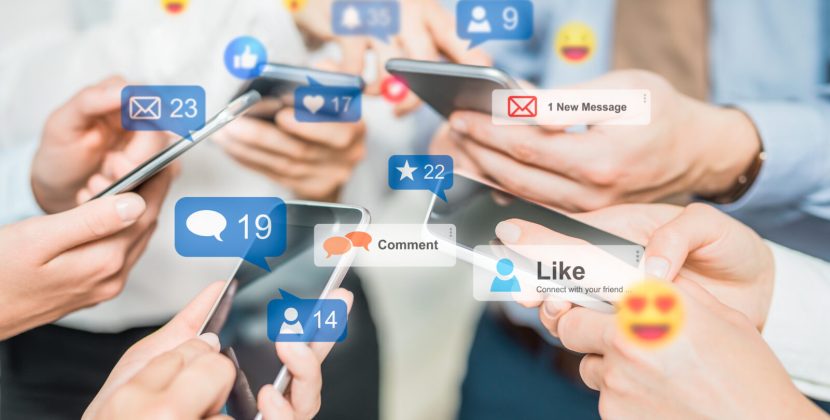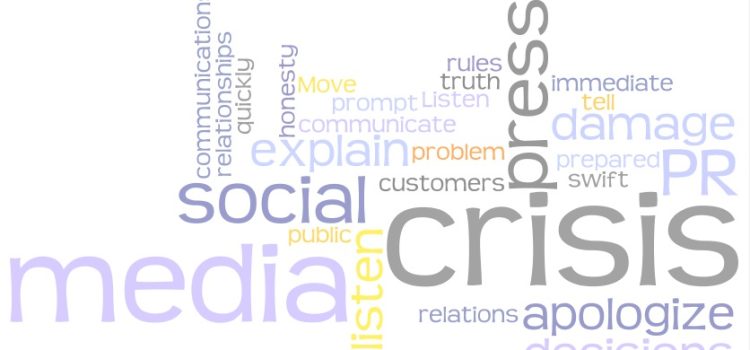
In today’s digital age, social media has become an indispensable tool for crisis management. From natural disasters to corporate scandals, social media platforms offer a real-time communication channel that can significantly impact the outcome of a crisis. This article delves into the multifaceted role of social media in crisis management, exploring its advantages, challenges, and best practices.
The Power of Real-Time Communication
One of the most significant advantages of social media in crisis management is its ability to facilitate real-time communication. During a crisis, timely information is crucial for effective decision-making and response. Social media platforms like Twitter, Facebook, and Instagram allow organizations and authorities to disseminate information quickly and efficiently. This real-time communication can help mitigate the impact of a crisis by keeping the public informed and engaged.
For instance, during natural disasters such as hurricanes or earthquakes, social media can provide real-time updates on the situation, including evacuation routes, shelter locations, and emergency contact numbers. This immediate access to information can save lives and reduce panic among affected populations.
Enhancing Public Awareness and Engagement
Social media also plays a critical role in raising public awareness and engagement during a crisis. By leveraging social media platforms, organizations can reach a broader audience and ensure that crucial information is disseminated widely. This increased reach can help mobilize resources, volunteers, and donations, which are often essential for effective crisis management.

Moreover, social media allows for two-way communication, enabling organizations to engage directly with the public. This interaction can help build trust and credibility, as it demonstrates transparency and a commitment to addressing the crisis. For example, during the COVID-19 pandemic, health organizations used social media to share updates, answer questions, and debunk misinformation, thereby fostering a well-informed and engaged public.
Monitoring and Managing Public Perception
In addition to disseminating information, social media can be a valuable tool for monitoring and managing public perception during a crisis. By analyzing social media conversations and sentiment, organizations can gauge public opinion and identify potential issues before they escalate. This real-time feedback can inform crisis response strategies and help organizations address concerns proactively.
For example, during a corporate crisis, companies can use social media listening tools to monitor mentions of their brand and assess the overall sentiment. This insight can help them tailor their communication strategy, address customer concerns, and mitigate reputational damage.
Facilitating Coordination and Collaboration
Effective crisis management often requires coordination and collaboration among various stakeholders, including government agencies, non-profit organizations, and private sector entities. Social media platforms can facilitate this coordination by providing a centralized communication channel where stakeholders can share information, updates, and resources.
For instance, during a natural disaster, government agencies can use social media to coordinate with local authorities, emergency responders, and non-profit organizations. This collaboration can enhance the efficiency and effectiveness of the crisis response, ensuring that resources are allocated appropriately and that efforts are not duplicated.
Challenges and Risks
While social media offers numerous benefits for crisis management, it also presents several challenges and risks. One of the primary challenges is the spread of misinformation and rumors. During a crisis, false information can spread rapidly on social media, leading to confusion and panic. Organizations must be vigilant in monitoring social media for misinformation and take swift action to correct it.
Another challenge is the potential for negative backlash. Social media can amplify negative sentiment, and a poorly handled crisis response can quickly escalate into a reputational crisis. Organizations must be prepared to handle criticism and respond to negative comments in a constructive and empathetic manner.
Additionally, social media crises can be unpredictable and evolve rapidly. Organizations must have a robust crisis management plan in place, including predefined roles and responsibilities, communication protocols, and contingency plans. This preparation can help ensure a swift and effective response when a crisis occurs.
Best Practices for Using Social Media in Crisis Management
To maximize the benefits of social media in crisis management, organizations should follow several best practices:
- Develop a Crisis Communication Plan: A well-defined crisis communication plan should outline the roles and responsibilities of team members, communication protocols, and key messages. This plan should be regularly reviewed and updated to reflect changing circumstances and emerging risks.
- Monitor Social Media Continuously: Continuous monitoring of social media platforms is essential for identifying emerging issues, tracking public sentiment, and responding to misinformation. Organizations should use social media listening tools to automate this process and ensure timely detection of potential crises.
- Engage with the Public: During a crisis, organizations should actively engage with the public by responding to questions, addressing concerns, and providing regular updates. This engagement can help build trust and credibility, as well as demonstrate a commitment to transparency and accountability.
- Collaborate with Stakeholders: Effective crisis management often requires collaboration with various stakeholders, including government agencies, non-profit organizations, and private sector entities. Organizations should establish strong partnerships and communication channels with these stakeholders to facilitate coordination and information sharing.
- Be Transparent and Honest: Transparency and honesty are crucial during a crisis. Organizations should provide accurate and timely information, acknowledge mistakes, and take responsibility for their actions. This approach can help build trust and mitigate reputational damage.
- Evaluate and Learn: After a crisis, organizations should conduct a thorough evaluation of their social media crisis management efforts. This evaluation should identify strengths, weaknesses, and areas for improvement, and inform future crisis management strategies.
Conclusion
Social media has become an integral component of modern crisis management, offering numerous benefits such as real-time communication, public engagement, and coordination among stakeholders. However, it also presents challenges and risks that organizations must navigate carefully. By following best practices and continuously improving their social media crisis management strategies, organizations can effectively leverage social media to mitigate the impact of crises and enhance their overall resilience.
In conclusion, the role of social media in crisis management is multifaceted and dynamic. As the digital landscape continues to evolve, organizations must stay informed about emerging trends and technologies to ensure they are prepared to respond effectively to future crises. By doing so, they can harness the power of social media to protect their reputation, maintain public trust, and ultimately, save lives.








